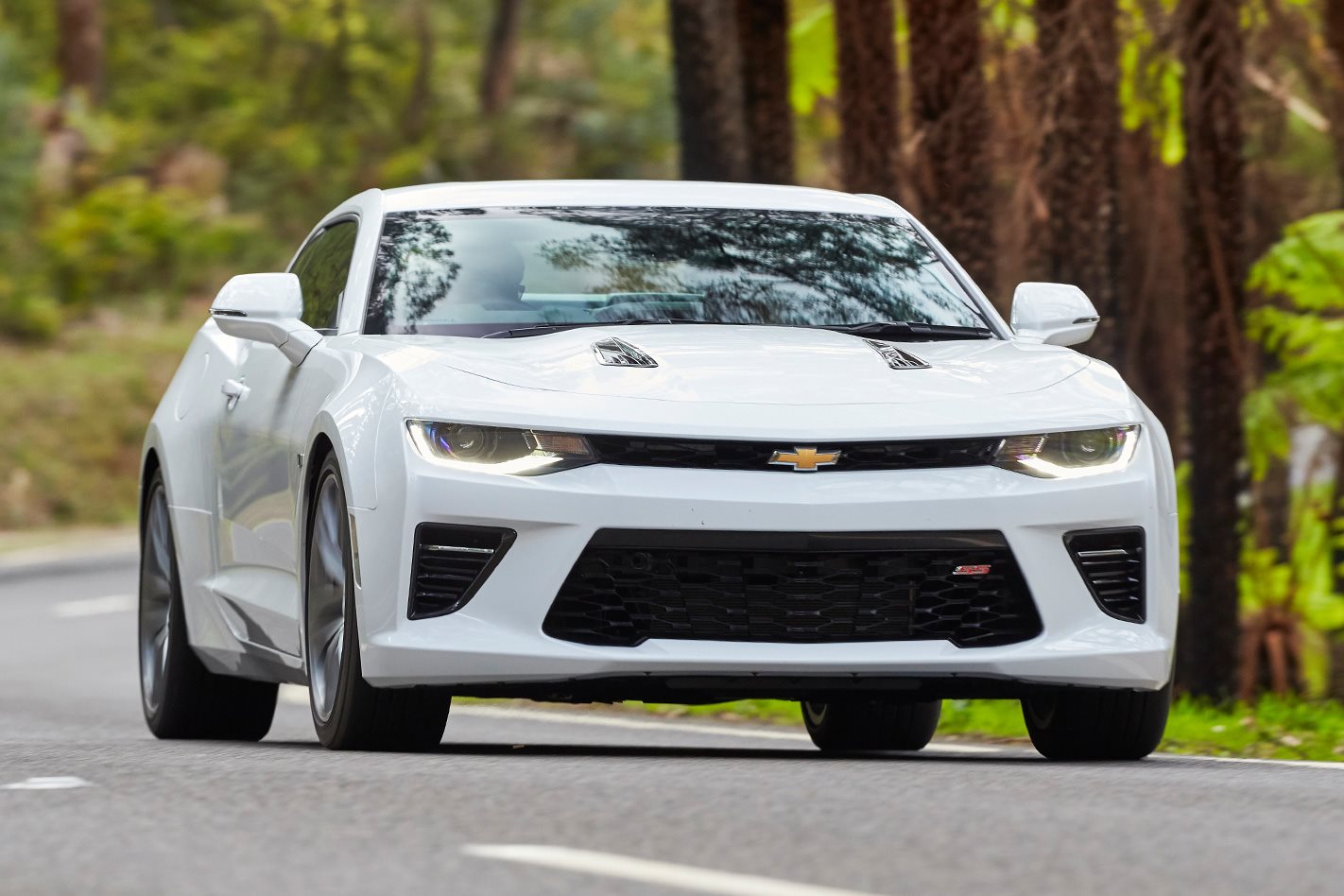WHAT IS IT
The Camaro is the yin to the Mustang’s yang. You can’t consider one without the other, but while Ford has racked up huge sales by importing an official RHD pony car, the Camaro has missed out on RHD markets. Until now. HSV re-engineers the Camaro 2SS for the Australian market and brings you a tempting, if somewhat expensive, alternative.
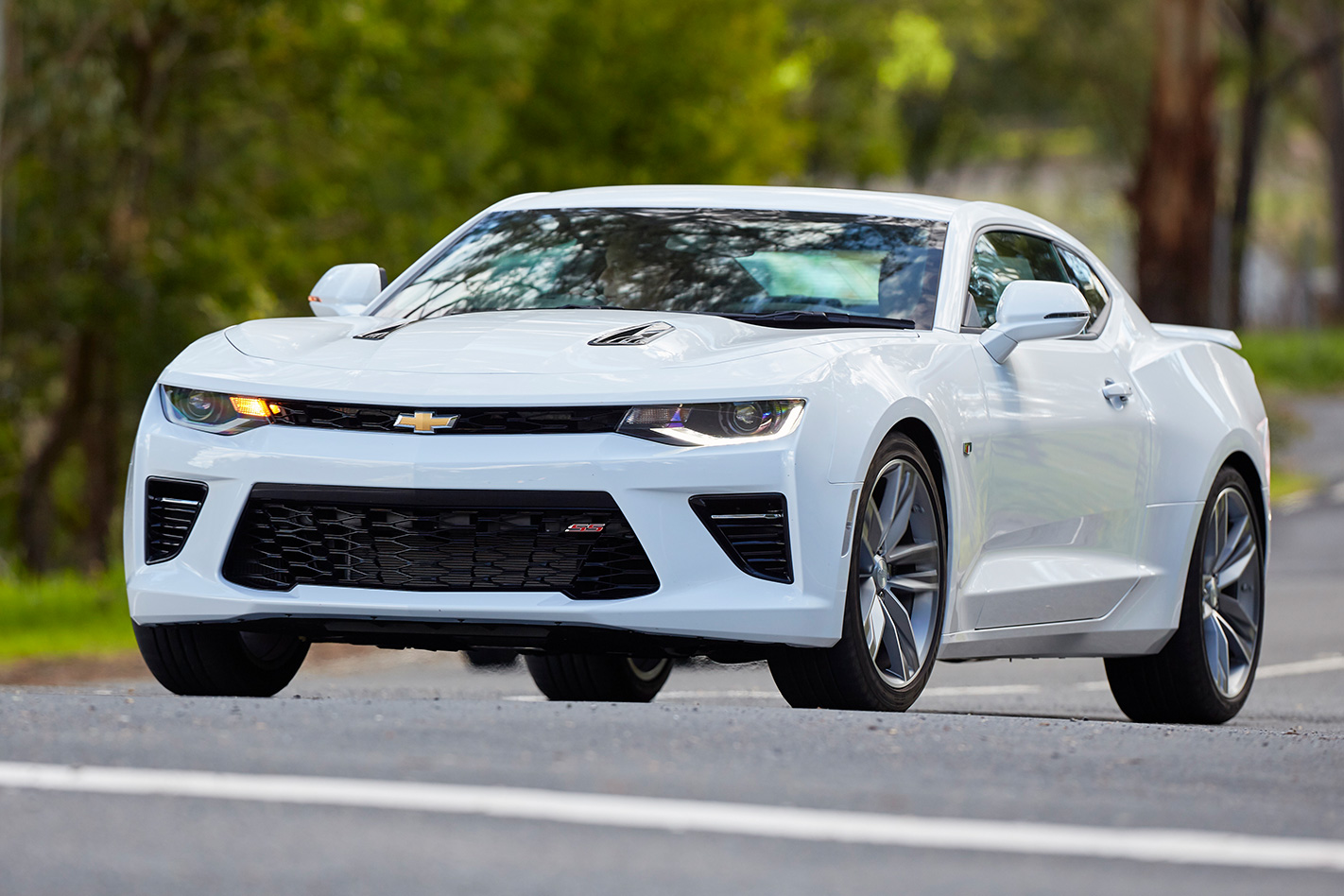
WHY WE’RE TESTING IT
This car has been rumoured for years. Holden never officially grasped the opportunity and now a revitalised HSV has jumped in feet first. We couldn’t wait to see whether the Camaro could justify its circa-$20K price premium over the market-leading Mustang.
MAIN RIVALS
Audi S5; BMW M2; Ford Mustang GT; Kia Stinger GT; Mercedes C43 AMG coupe; Nissan 370Z Nismo
THE WHEELS VERDICT
Want more muscle than a Mustang with a chassis that’s next-level? You’ll need to be quick and get your deposit down for the right-hand-drive Chevrolet Camaro. It’s charismatic, decently equipped, very capable and, at $85,990, there’s not a lot else to touch it. The right-hook engineering from HSV is appropriately diligent, but there is the odd quirk and the interior packaging is poor. Chances are, however, that you won’t care when you wring out that 6.2-litre LT1 V8. The Camaro will doubtless remain a niche contender but we’re more than glad that nothing material’s been lost in translation.

PLUS: Charisma; soundtrack; body control; RHD switch is very classy; sleek styling; engine and transmission calibration MINUS: Lack of space; no HUD; looks expensive versus Mustang GT; no manual option (yet); lacks some MY19 features
THE WHEELS REVIEW
HSV prefers to call it ‘re-engineering’ rather than ‘converting’ when discussing the process of switching the Chevrolet Camaro’s steering wheel from the left to the right-hand side of the car. Well of course it would. The image of right-hand-drive conversions isn’t all that savoury. It’s redolent of backstreet bodgers and chancers inflicting all kinds of half-baked workarounds and Rube Goldberg solutions. To see a Camaro being stripped back to its shell at HSV’s brand new Clayton works, with the only parts left in it being front and rear glass, rear suspension assembly, fuel tank and differential is to see genuine re-engineering at work. In fact, more man hours go into the Camaro strip, fit and rebuild process than went into many of HSV’s Commodore-based creations. That goes some way to explaining that $85,990 price.
That’s all very well, but you’re probably here because you want answers to two very specific questions. Firstly, how does the right-hook Camaro drive and secondly, is it worth that $20K premium over a Mustang GT? The former is certainly an easier issue to address than the latter. If you’ve driven a Mustang GT, loved the V8 but found the rest of the package a bit thud and blunder, the Camaro could be just the ticket. It feels tauter and more focused than the Ford and that right-hand drive job? In terms of fit and finish it’s tough to pick.
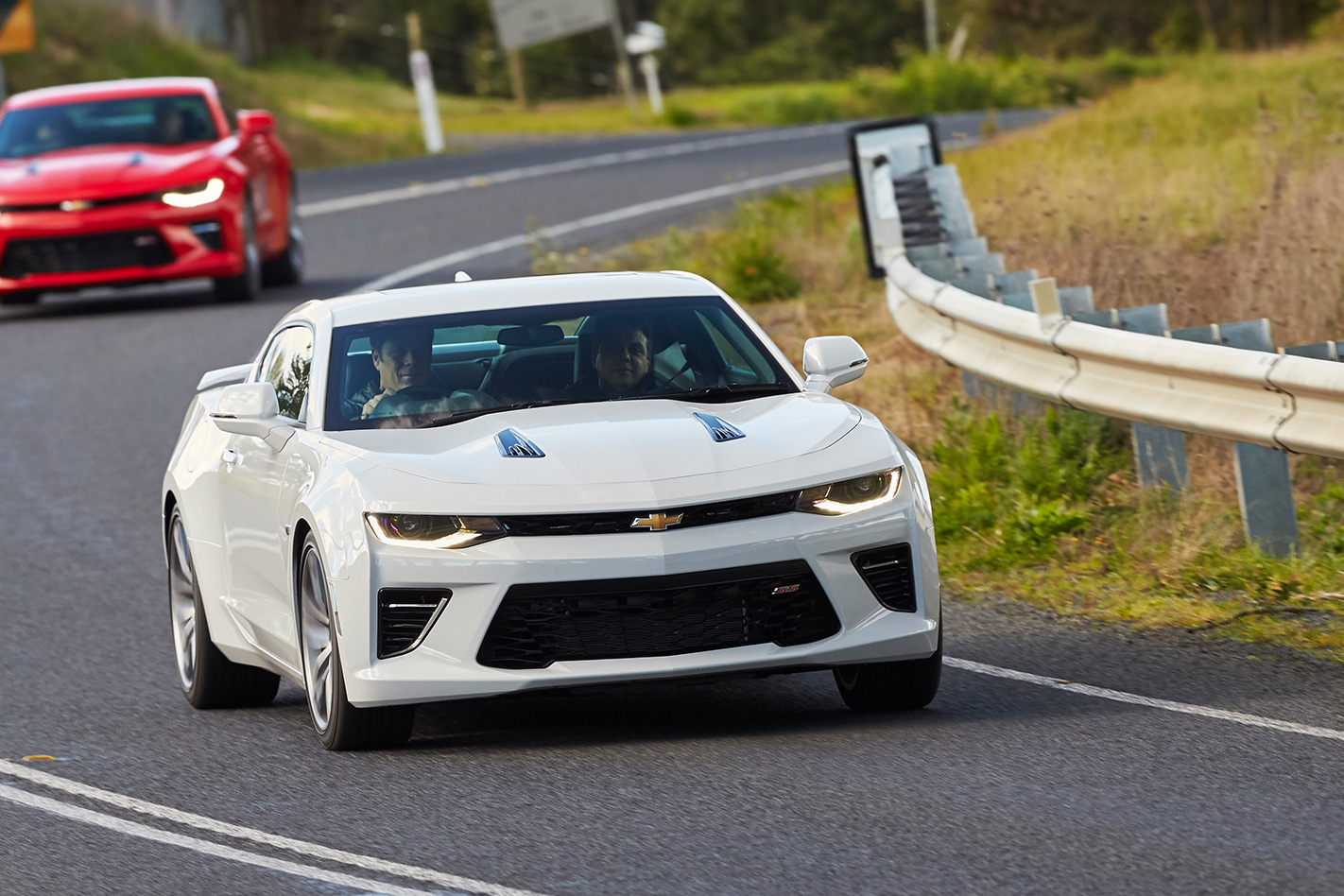
If you really know your Camaros inside out, you’ll notice that, like the Mustang, the centre armrest is still in its left-hook configuration, with the cupholders on the driver’s side and the cushioned armrest extending forward for the passenger. There’s a stack of wiring and other electronics housed beneath here and remanufacturing this assembly would have been cost-prohibitive. You might also register a barely noticeable indent atop the instrument binnacle instead of a head-up display. The windscreen features a clear plastic reflecting insert in the laminate on the left-hand side of the windscreen to focus the image, and there was no way HSV could get the HUD to focus clearly on the right-hand side of the screen without it, so Aussie Camaros do without. Everything else feels painstakingly immaculate and HSV has gone out of its way to improve the standard car in terms of panel fit and customer delivery condition.

Fire one up and there’s a sharp bark of revs from the 6.2-litre LT1 V8. Direct fuel injection, no power steering pump (the LT1 is designed for electrically assisted steering systems), oil spray piston cooling, a completely redesigned pop-up dome piston design, forged rods, splayed spark plugs and a reversed valve layout make this a very different engine to the LS3 that many Aussies are very familiar with. It’s a great engine, but one that’s subtly different in feel to an LS3, preferring to get a few revs on the board and rewarding the driver with an angry metallic timbre as you crest 5000rpm. The peak power figure of 339kW arrives at a heady 6000rpm and peak torque of 617Nm will need you to wind the needle round to 4600rpm to plunder, so the Camaro can feel a little lethargic if you catch it off the boil.
This rewards a certain style of driving. Yes, it will happily burble around in Tour mode at 2000rpm, but the Camaro demands drivers. It’s a car that really enjoys being pounded, harassed, bullied and manhandled through corners. To do this, you’ll need to switch the car into Track mode which amps up the throttle and shift maps, emboldens the bi-modal exhaust (which also features a decidedly unstealthy Stealth mode), eases back the stability control and reduces steering assistance. It’s only the latter that’s a little questionable, Sport mode offering a slightly less gluey feel, but Track is a mode that can and should be used by keen drivers on road. It’s just a shame that we miss out on the trick magnetorheological dampers that are available in the US. The dampers would have added an unwanted layer of electronic/software complexity to HSV’s engineering workload, plus they aren’t offered as standard on the specification of Camaro HSV takes, which is tailored for Argentina.
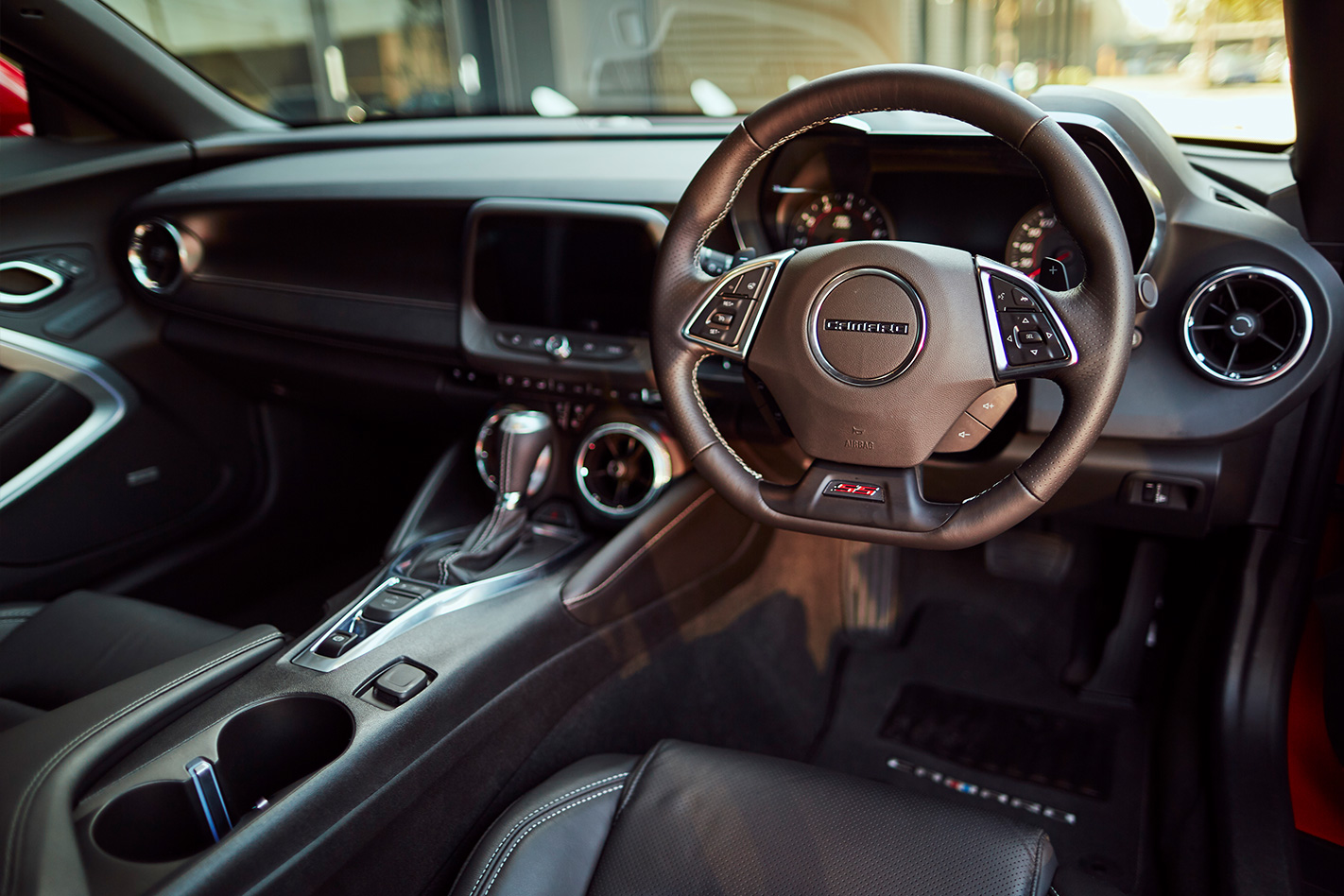
Tipping the scales at 1710kg, the Camaro manages a power-to-weight ratio of 198kW per tonne, which means it’s respectably rapid. It’s not M4/RS5/C63 super sedan quick, but it’s enough to give it the nod on the 190kW/tonne ten-speed Mustang GT. Traction off the line is helped by the hefty rear 275/35 ZR20 Goodyear Eagle run flats, 100km/h disappearing in around 4.5 seconds. The 8L90 transmission does a good job of punching through the ratios with some verve in Track mode, and there’s a pair of stubby wheel-mounted paddle shifters should you prefer to wring the thing out yourself.
With only four RHD pre-production cars in existence at the time of the road drive and HSV’s managing director parked in the passenger seat, we didn’t really get the opportunity to explore the more expressive side of the Camaro’s handling envelope, but it does come with a standard limited-slip diff and the stability control system goes all the way to zero. Ride quality is supple and combines with very good body control. It’s not hard to imagine how the supercharged ZL1 versions of this car managed those seemingly implausible Nurburgring lap times. In the hands of Car and Driver magazine, the atmo Camaro V8 SS in 1LE trim ran a faster lap around Virginia International Raceway than an Audi R8 V10 Plus. Four-pot Brembo front calipers do a good job of stopping the Camaro, and because its balance is so good and its 2811mm wheelbase relatively long (about 90mm more generous than a Mustang), the Chevrolet can be trail-braked aggressively into corners before tipping into yaw. In Sport, the stability control system can be a little over-eager to join the party, the dash light often flashing furiously with only moderate throttle openings on corner exit. At some points this manifested itself in a strange pivoting feel, the overly officious ESC almost acting like torque vectoring by braking.

The equipment level of these Argentinian-spec Camaros (chosen because they’re closest to our requirements in terms of details such as lights, standard equipment and emissions) is very good. You get eight-way adjustable driver’s seat, 6-way passenger chairs, heating and ventilation for the front seats, a heated steering wheel, a Bose nine-speaker stereo, MyLink with Apple CarPlay and Android Auto, dual zone climate control, wireless phone charging and a glass sunroof. It’s not all perfect, though. Packaging leaves a lot to be desired, with visibility out of the car poor and little useable interior storage. The door bins are minuscule, the wireless phone charger behind your left elbow, the cup holders are uncomfortable to rest your elbow on and the boot has a tiny, awkwardly shaped aperture to post things through. The sunroof (a feature HSV didn’t actually want and which adds nearly $2k to their invoice price from Chevrolet) robs you of a few centimetres of much-needed headroom, the central air vents blow straight onto the gear shifter and rear legroom is paltry. Then there’s the fact that with no head-up display, you’re forced to read an analogue speedometer that rises in 30km/h increments. The tiny gap between 90 and 120km/h means that it’s hard to gauge at a glance whether you’re travelling at 100 or 106km/h, which is enough – in Victoria at least – to earn you a ticket. We also miss out on the 2019 model year updates which introduce the ten-speed auto, launch control and line lock, an updated infotainment system, forward collision alert, a rear view camera system and a facelift of questionable visual appeal. HSV has crash-tested four Camaros to verify engineering and for ADR purposes, but the car is not being submitted to ANCAP for crash testing. With no form of AEB it would probably return a fairly unspectacular score in any case.
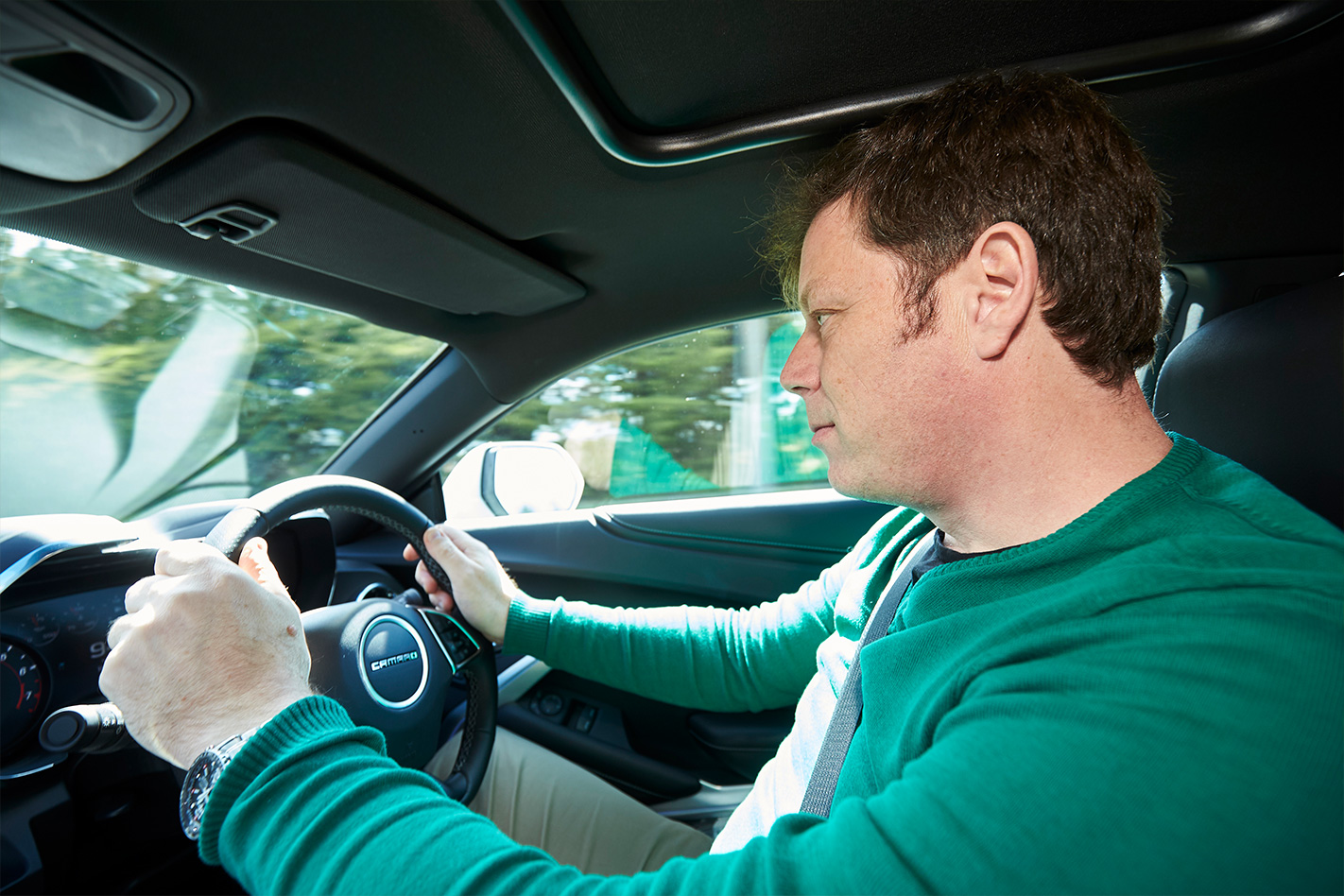
So, onto the nagging question of whether an $85,990 Chevrolet Camaro makes any kind of sense in a market where Ford is still shovelling Mustangs out of its dealers like crazy, a car that is also offered with a manual gearbox and in convertible guise, remember. The only person who can really answer that question is you. HSV will point to the fact that Camaro sales figures will only ever peak at 1000 units per year against the ubiquitous Mustang’s 7000 or more. That buys an element of exclusivity, but where the Camaro really scores is in feeling like a driver’s car rather than an unreconstructed muscle car. There’s genuine talent in its chassis tuning that feels a level beyond the Mustang, and the LT1 engine’s significant torque advantage means that, in the absence of a RHD Shelby offering, the Chevrolet scores notable bragging rights. That’ll be enough for some. If or when the long-rumoured supercharged Camaro starts rolling from HSV’s Clayton plant in right-hand-drive guise, it’ll put a 485kW-sized hole in that debate.

SPECS
Model: Chevrolet Camaro 2SS Engine: 6162cc, V8, ohv, 16v Max Power: 339kW @ 6000rpm Max Torque: 617Nm @ 4600rpm Transmission: 8-speed automatic Weight: 1710kg 0-100km/h: 4.5 sec (est) Fuel economy: 11.5L/100km (claimed) Price: $85,990 On sale: Now


